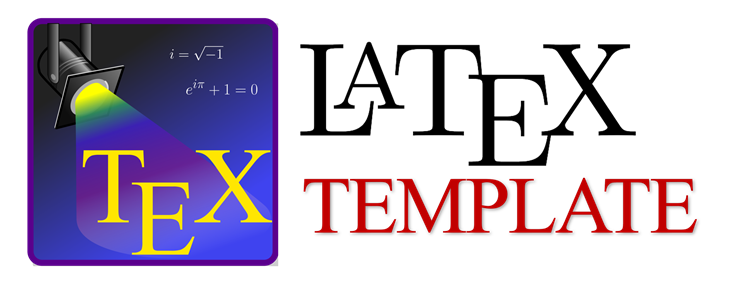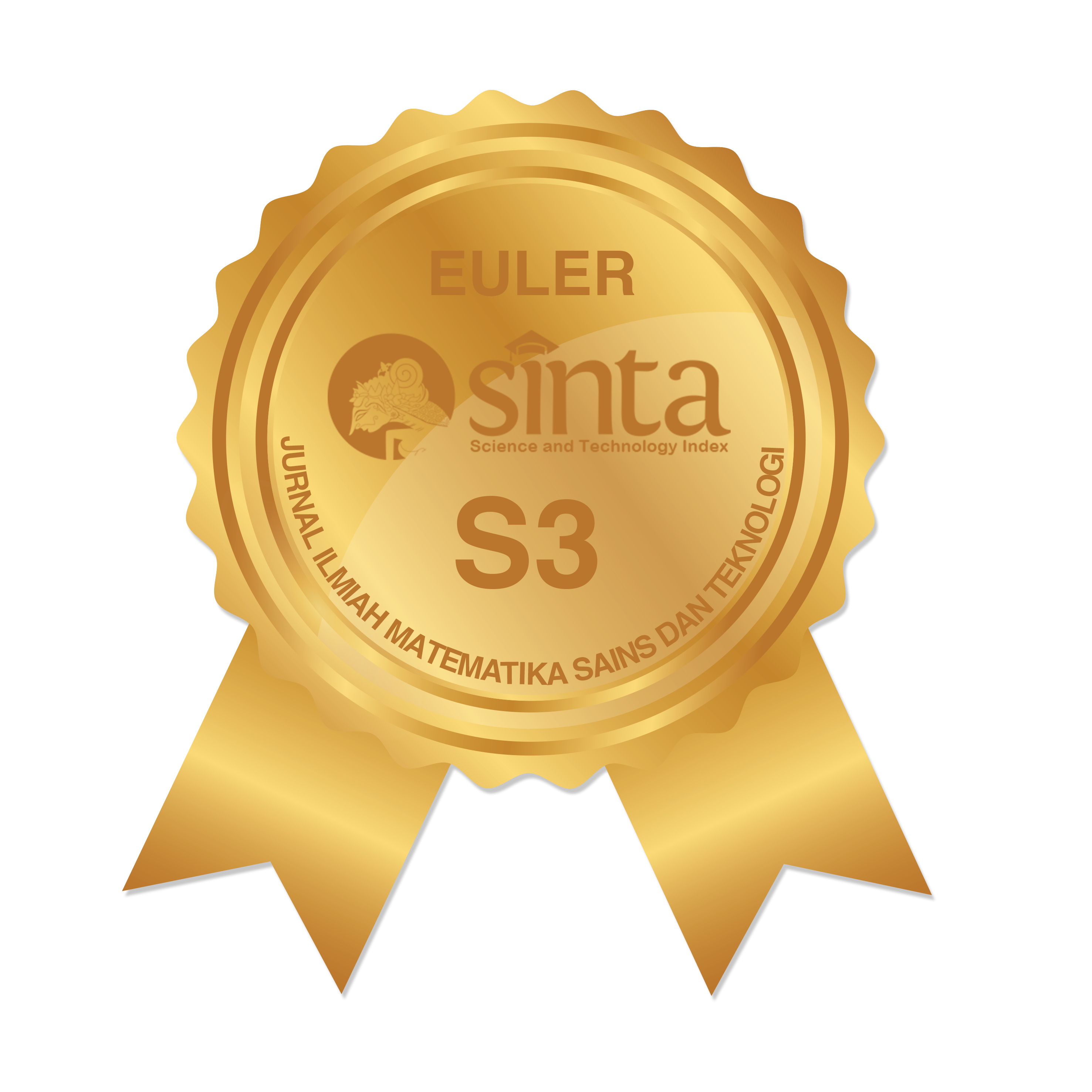Analysis of Students' Errors in Solving HOTS Problems on Algebraic Materials Based on the Complexity Level of the Problem Based on Bloom's Theory
Abstract
Keywords
Full Text:
PDFReferences
A. Lutfia, "Analisis Kesalahan Siswa Dalam Menyelesaikan Soal Matematika Materi Lingkaran" Innov. J. Soc. Sci. Res., vol. 1, no. 1, pp. 32-35, 2021, doi: 10.31004/innovative.v1i1.2033.
A. Nurfarisi Sugiarto and M. Afrilianto, "Analisis Kesalahan Siswa Smp Dalam Menyelesaikan Soal Materi Sistem Persamaan Linier Dua Variabel Berdasarkan Taksonomi Bloom Dengan Menggunakan Teori Polya" JPMI (Jurnal Pembelajaran Mat. Inov., vol. 4, no. 4, pp. 1001-1008, 2021, doi: 10.22460/jpmi.v4i4.1001-1008.
A. Abdillah, V. Mandailina, D. Pramita, and M. Mahsup, "Peningkatan kemampuan aritmatika untuk perhitungan cepat operasi aljabar siswa madrasah aliyah" JMM (Jurnal Masy. Mandiri), vol. 4, no. 2, pp. 101-106, 2020, doi: https://doi.org/10.31764/jmm.v4i2.1747.*
P. Pujilestari, "Analisis Kesalahan Siswa Dalam Menyelesaikan Soal Matematika Sma Materi Operasi Aljabar Bentuk Pangkat Dan Akar" Jisp, vol. 2, no. 1, pp. 226-232, 2018, doi: http://dx.doi.org/10.58258/jisip.v2i1.264.
W. Mahmudah, "Analysis of Student Errors in Solving Hots Type Math Problems Based on Newman's Theory" J. UJMC, vol. 4, no. 1, pp. 49-56, 2018.
A. Fridanianti, H. Purwati, and Y. H. Murtianto, "Analisis Kemampuan Berpikir Kritis Dalam Menyelesaikan Soal Aljabar Kelas Vii Smp N 2 Pangkah Ditinjau Dari Gaya Kognitif Reflektif Dan Kognitif Impulsif" AKSIOMA J. Mat. dan Pendidik. Mat., vol. 9, no. 1, p. 11, 2018, doi: 10.26877/aks.v9i1.2221.
W. Widyawati, D. Astuti, and R. Ijudin, "Proses Berpikir Siswa Dalam Menyelesaikan Soal Cerita Ditinjau Berdasarkan Kemampuan Matematika" J. Pendidik. Dan Pembelajaran Khatulistiwa, vol. 7, no. 9, pp. 1-8, 2018.
M. Mawaddah, A. Abdillah, S. Sirajuddin, and M. Mahsup, "Implementation Of Newman Method For Analyzing Student Errors In Solving Hots Type Math Problems" AKSIOMA J. Progr. Stud. Pendidik. Mat., vol. 11, no. 3, pp. 2383-2395, 2019, doi: https://doi.org/10.24127/ajpm.v11i3.5334.
A. Anugrah and H. Pujiastuti, "Analisis Kesalahan Siswa dalam Menyelesaikan Soal HOTS Bangun Ruang Sisi Lengkung" J. Pendidik. Mat., vol. 11, no. 1, pp. 67-76, 2020, doi: http://dx.doi.org/10.36709/jpm.v11i2.11897.
G. W. Mandini and H. Hartono, "Analisis kemampuan menyelesaikan soal HOTS model TIMSS dan kepercayaan diri siswa sekolah menengah pertama" Pythagoras J. Pendidik. Mat., vol. 13, no. 2, pp. 148-157, 2018, doi: 10.21831/pg.v13i2.21234.
M. Forehand, "Bloom ' s Taxonomy : Original and revised" Emerg. Perspect. Learn. teaching, Technol., p. 12, 2010, [Online]. Available: http://www4.edumoodle.at/gwk/pluginfile.php/109/mod_resource/content/5/forehand_bloomschetaxonomie02.pdf
S. R. Sobral, "Bloom's taxonomy to improve teaching-learning in introduction to programming" Int. J. Inf. Educ. Technol., vol. 11, no. 3, pp. 148-153, 2021, doi: 10.18178/ijiet.2021.11.3.1504.
B. S. Bloom and D. R. Krathwohl, "Taxonomy of educational objectives: The classification of educational goals, by a committee of college and univesity examiners" Handbook 1: Cognitive domain. p. 10, 1956.
A. Kniley, "Bloom ' s Taxonomy Bloom ' s Taxonomy" Polit. Soc., vol. 1, no. 1, pp. 1-10, 2009.
P. N. Sagala and A. Andriani, "Development of Higher-Order Thinking Skills (HOTS) Questions of Probability Theory Subject Based on Bloom's Taxonomy" J. Phys. Conf. Ser., vol. 1188, no. 1, pp. 1-14, 2019, doi: 10.1088/1742-6596/1188/1/012025.
D. Amalia and W. Hadi, "Analisis Kesalahan Siswa Dalam Menyelesaikan Soal Hots Berdasarkan Kemampuan Penalaran Matematis" Transform. J. Pendidik. Mat. dan Mat., vol. 4, no. 1, pp. 219-236, 2020, doi: 10.36526/tr.v4i1.904.
Q. Ayun, I. Wulandari, and K. Wibawa, "Analisis Kesalahan Siswa Dalam Menyelesaikan Soal Tipe Hots Berdasarkan Prosedur Polya Pada Materi Aljabar" J. Santiaji Pendidik. (JSP), vol. 12, no. 1, 2022.
C. Yuliana, S. Sanusi, and S. Maharani, "Analisis Kesalahan Siswa Dalam Menyelesaikan Soal Cerita Pada Materi Sistem Persamaan Linear Dua Variabel Berdasarkan Kemampuan Siswa" J. Educ. Res., vol. 1, no. 1, pp. 17-26, 2019, doi: https://dx.doi.org/10.36653/educatif.v1i1.3.
S. J. Sari and T. Yuwono, "Kesalahan Siswa dalam Mengerjakan Soal Sistem Persamaan Linear Dua Variabel Berdasarkan Kriteria Watson" J. Tadris Mat., vol. 3, no. 2, pp. 219-228, 2020, doi: 10.21274/jtm.2020.3.2.219-228.
S. Azmia and S. Soro, "Analisis Kesalahan Siswa dalam Menyelesaikan Soal Cerita Materi Sistem Persamaan Linear Dua Variabel Ditinjau dari Taksonomi Solo pada Siswa" J. Cendekia J. Pendidik. Mat., vol. 5, no. 2, pp. 2001-2009, 2021, doi: 10.31004/cendekia.v5i2.681.
A. Rupaidah and A. Danaryanti, "Pengembangan LKS dengan Pendekatan Realistik pada Materi Sistem Persamaan Linear Dua Variabel" EDU-MAT J. Pendidik. Mat., vol. 1, no. 1, pp. 10-17, 2013, doi: 10.20527/edumat.v1i1.548.
A. Kamila, S. Nafisah, D. Aprilia, and B. G. Wicaksono, "Analisis kemampuan siswa smp dalam menyelesaikan soal hots matematika materi sistem persamaan linear dua variabel" ProSANDIKA UNIKAL (Prosiding Semin. Nas. Pendidik. Mat. Univ. Pekalongan), vol. 1, no. 22, pp. 119-126, 2020.
P. P. Sari and D. A. Lestari, "Analisis Kesulitan Siswa SMP Menyelesaikan Soal Cerita Pada Materi Sistem Persamaan Linear Dua Variabel" J. Cendekia J. Pendidik. Mat., vol. 04, no. 01, pp. 286-293, 2020, doi: https://doi.org/10.31004/cendekia.v4i1.181.
V. Oktoviani, W. L. Widoyani, and F. Ferdianto, "Analisis kemampuan pemahaman matematis siswa SMP pada materi sistem persamaan linear dua variabel" Edumatica J. Pendidik. Mat., vol. 9, no. 1, pp. 39-46, 2019, doi: 10.22437/edumatica.v9i1.6346.
M. F. Darus, A. I. Imami, and A. P. Abadi, "Analisis Soal dalam Buku Matematika Kelas VII Semester 1 Berdasarkan Kriteria dari Higher Order Thinking Skills (Hots)" JPMI (Jurnal Pembelajaran Mat. Inov., vol. 4, no. 4, pp. 777-788, 2021, doi: 10.22460/jpmi.v4i4.777-788.
N. S. Anngraini, H. Dewi, and D. S. Rahayu, "Analisis Kemampuan Berpikir Tingkat Tinggi Siswa Analysis of Students ' Higher Order Thinking Skills on Relation and Function for Class Viii At Smpn 1" JUPITEK J. Pendidik. Mat., vol. 4, no. 2, pp. 79-86, 2022, doi: https://doi.org/10.30598/jupitekvol4iss2pp79-86.
W. Gumelar and M. Afrilianto, "Analisis Kesulitan Siswa SMP dalam Menyelesaikan Soal Persamaan Linear Dua Variabel" JPMI (Jurnal Pembelajaran Mat. Inov., vol. 4, no. 6, pp. 1481-1488, 2021, doi: 10.22460/jpmi.v4i6.1481-1488.
D. Agustiah, T. Fauzi, and E. Ramadhani, "Dampak Penggunaan Media Sosial Terhadap Perilaku Belajar Siswa" Islam. Couns. J. Bimbing. Konseling Islam, vol. 4, no. 2, p. 181, 2020, doi: 10.29240/jbk.v4i2.1935.
N. Ahmad, R. Ilato, and B. R. Payu, "Pengaruh Pemanfaatan Teknologi Informasi Terhadap Minat Belajar Siswa" Jambura Econ. Educ. J., vol. 2, no. 2, pp. 70-79, 2020, doi: 10.37479/jeej.v2i2.5464.
S. T. Hidayatuladkia, M. Kanzunnudin, and S. D. Ardianti, "Peran Orang Tua dalam Mengontrol Penggunaan Gadget pada Anak Usia 11 Tahun" J. Penelit. dan Pengemb. Pendidik., vol. 5, no. 3, p. 363, 2021, doi: 10.23887/jppp.v5i3.38996.
DOI: https://doi.org/10.37905/euler.v11i2.23053
Refbacks
- There are currently no refbacks.
Copyright (c) 2023 Yulia Muliana, Abdillah, Mahsup, Syaharuddin, Abdul-Lateef Olamide Ahmodu, Mohammed Muniru Iddrisu

This work is licensed under a Creative Commons Attribution-NonCommercial 4.0 International License.
Euler : Jurnal Ilmiah Matematika, Sains dan Teknologi has been indexed by:
EDITORIAL OFFICE OF EULER : JURNAL ILMIAH MATEMATIKA, SAINS, DAN TEKNOLOGI |
 | Department of Mathematics, Faculty of Mathematics and Natural Science, Universitas Negeri Gorontalo Jl. Prof. Dr. Ing. B. J. Habibie, Tilongkabila, Kabupaten Bone Bolango 96554, Gorontalo, Indonesia |
 | Email: [email protected] |
 | +6287777-586462 (WhatsApp Only) |
 | Euler : Jurnal Ilmiah Matematika, Sains dan Teknologi (p-ISSN: 2087-9393 | e-ISSN:2776-3706) by Department of Mathematics Universitas Negeri Gorontalo is licensed under a Creative Commons Attribution-NonCommercial 4.0 International License. Powered by Public Knowledge Project OJS. |














